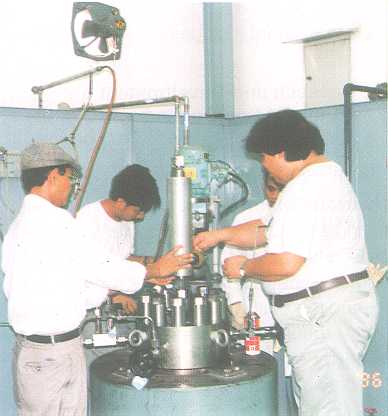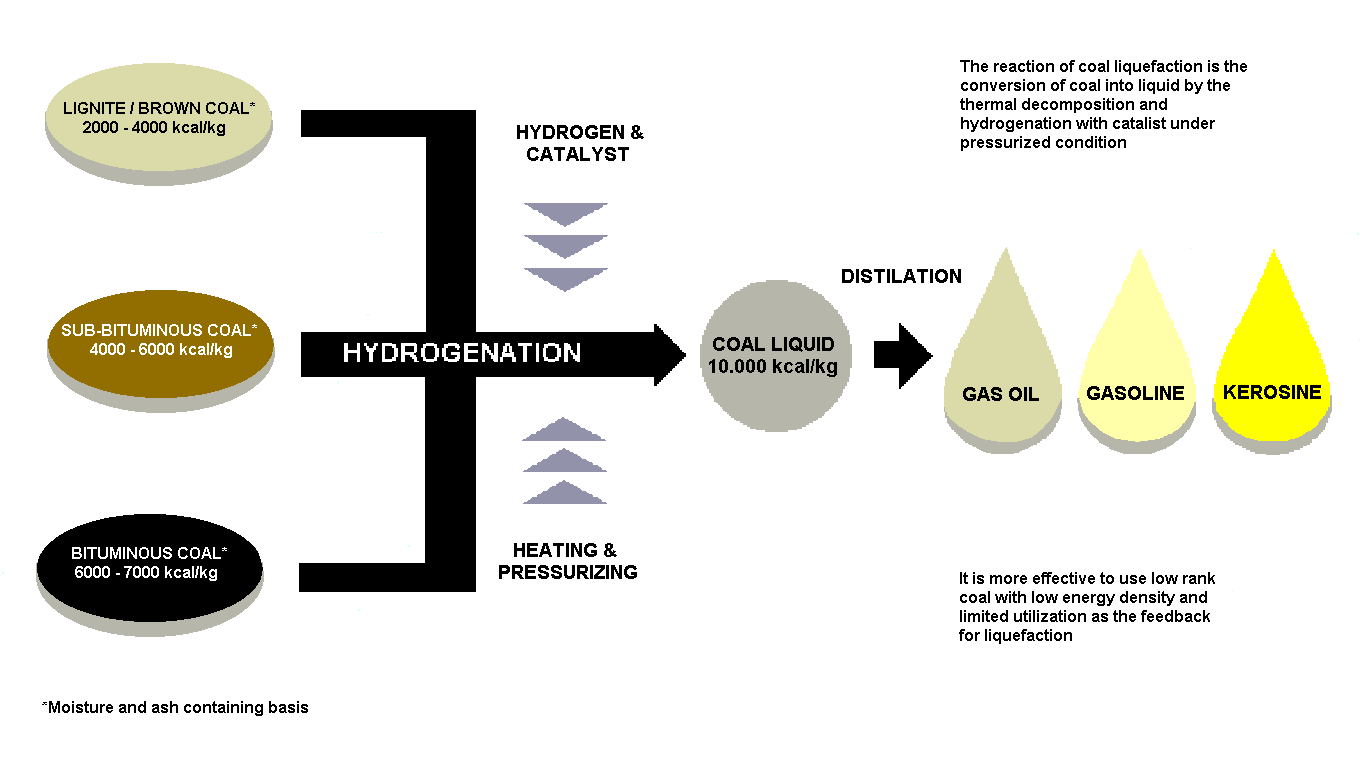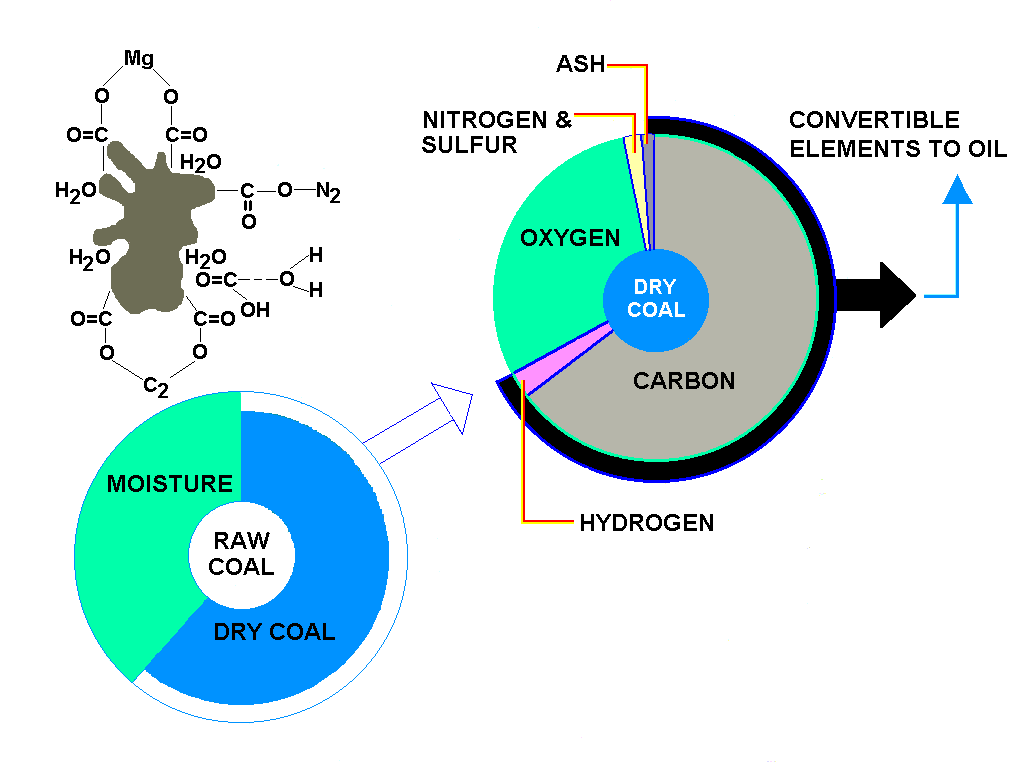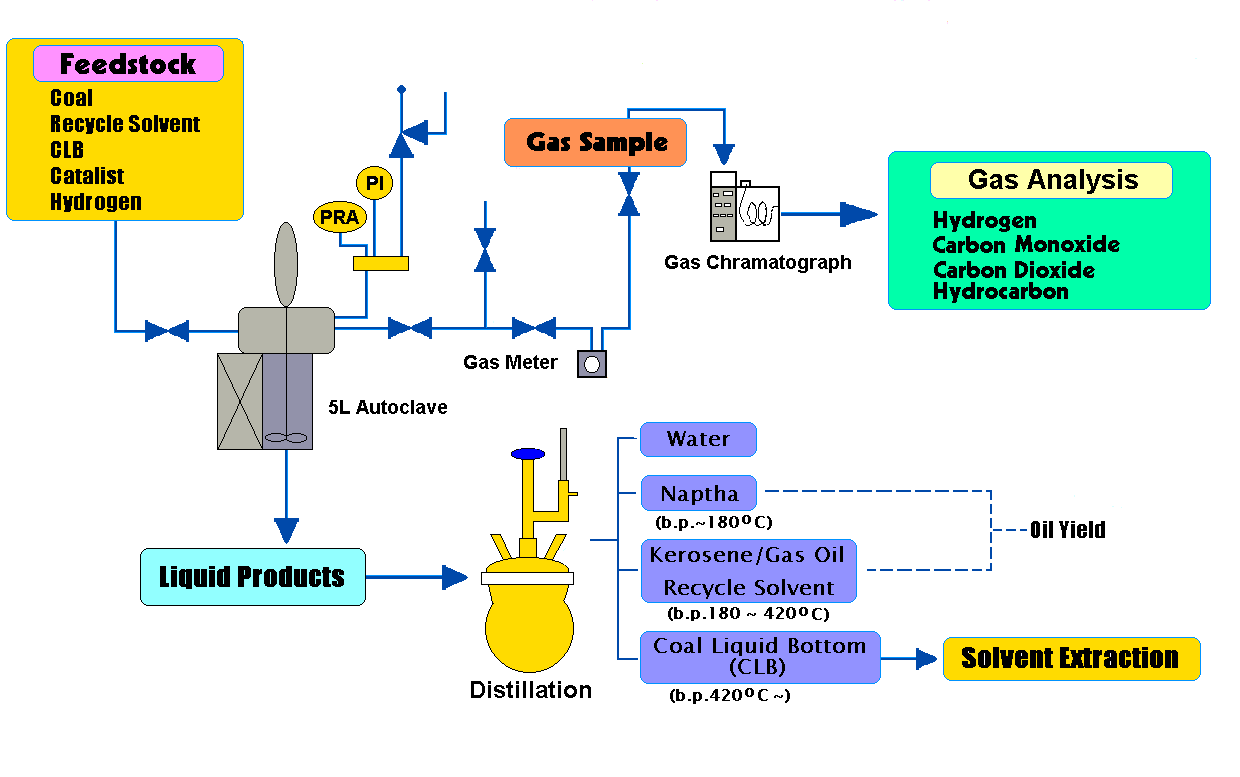Objectives :
- To substitute oil deman for domestic use
- To utilize abundant deposit of low rank coal
- To produce export community for nation income
- To develop coal liquefaction, liquefied oil upgrading process
- To evaluate economic, technical, environment and institution aspects

Indonesian Low-Rank Coal Liquefaction Technology
NEDO (Japan) - BPPT (Indonesia)
Background
The estimation of the indigenous Indonesian coal reserves reaching 36.3 billion tons has shown that the reserves are mainly (85.2%) in the form of low rank coal (lignite). The unfavorable quality of low rank such as high moisture content (<35%) and low calorific value (<4000 kcal/kg) makes it difficult to be exported.
The utilization of this Indonesian low rank coal is still limited for the mine-mouth electric power generation.
Meanwhile, Indonesia would have become net-oli importer by the year 2010 if no major oil fields be found somewhere in the archipelago. Under such circumstances, Indonesia may face national energy crisis in which the transportation sector as one of the most vital and strategic sectors, with heavily suffer from this crisis. To maintain a stable supply and demand enerfy scheme, a full diversifield energy strategy, especially for automotive fuel has to be applied.
One alternative to achieve the diversified energy strategy for the transportation sector is the utilization of the Indonesian low-rank coal reserves through the implementation of coal liquefaction technology. Such technology is able to convert coal from its solid phase in order to get liquid fuel, and substitute conventional heavy oil as well as light, medium oil for automobiles and aircraft.
Efforts to Implement Coal Liquefaction Technology for Low-Rank Coal in Indonesia
For this purpose, BPP Teknologi has initiated a joint research and technology development program with NEDO (New Energy Industrial and Technology Development Organization) of Japan through a bilateral MOU Agreement to utilize the Indonesian low rank coal. This program is to conduct coal liquefaction research in the scope of laboratory scale using 5L AC (five liter autoclave). Raw coal sample is taken from Tanjung Enim, cerenti (Riau) and East Kalimantan which is then characterized and tested both by BPP Teknologi and NBCL (Nippon Brown Coal Liquefaction Co., Ltd) who is entrusted by NEDO for executing this program, in the coal liquefaction laboratory at LSDE-Puspiptek Serpong (Indonesia) and Takasago (Japan).
Research and development is being conducted based on the experience of BCL (Brown Coal Liquefaction) process development of NEDO and NBCL for the purpose of investigating the possibility to implement such technology in a large scale, i.e demonstration and commercial plant. It is expected that result from this program can solve the fuel crisis in transportation sector.
Through research coorporation with NEDO, several important activities have been conducted i.e. coal field survey, coal characterization, training, and coal liquefaction laboratory test. Coals from five different areas in Kalimantan and Sumatra have been tested to determine their liquefiability using 5 liter autoclave. The test condition is :
So far, the initial result have shown that coal from South Banko is one of the best coal for liquefaction process which indicates the possibility of high oil yield over, 70 wt% of maf coal (moisture-ash-free).
What is Coal Liquefaction ?
Coal liquefaction is a process of converting solid into a liquid fuel under high pressure and temperature. To get the fuel and to improve the efficiency of the process, hydrogen and catalyst must be added under this condition.

Figure 1. Coal Liquefaction Concept
Since lignite is very cheap due to its low energy density and often hydrogen rich that makes the process consumes less hydrogen, the use of lignite as feedback for coal liquefaction bocomes cost effective. Therefore, lignite is very suitable for this process.

Figure 2. Coal Composition before and after Coal Liquefaction Process
Figure 3 shows that over all test procedure for 5L AC.M.a.f coal, solvent, catalyst and hydrogen are mixed in the autoclave to be heated up to 430-450oC for coal liquefaction process. Liquid product is distillated at a vacuum distillation while gas is analyzed using gas chromatography. CBL from distillation process is then fed into a solvent extraction unit for further fraction separation.

Figure 3. 5L Autoclave Test Procedure
<=Back Next=>